White Pocket Exploration Guide: Everything You Need to Know
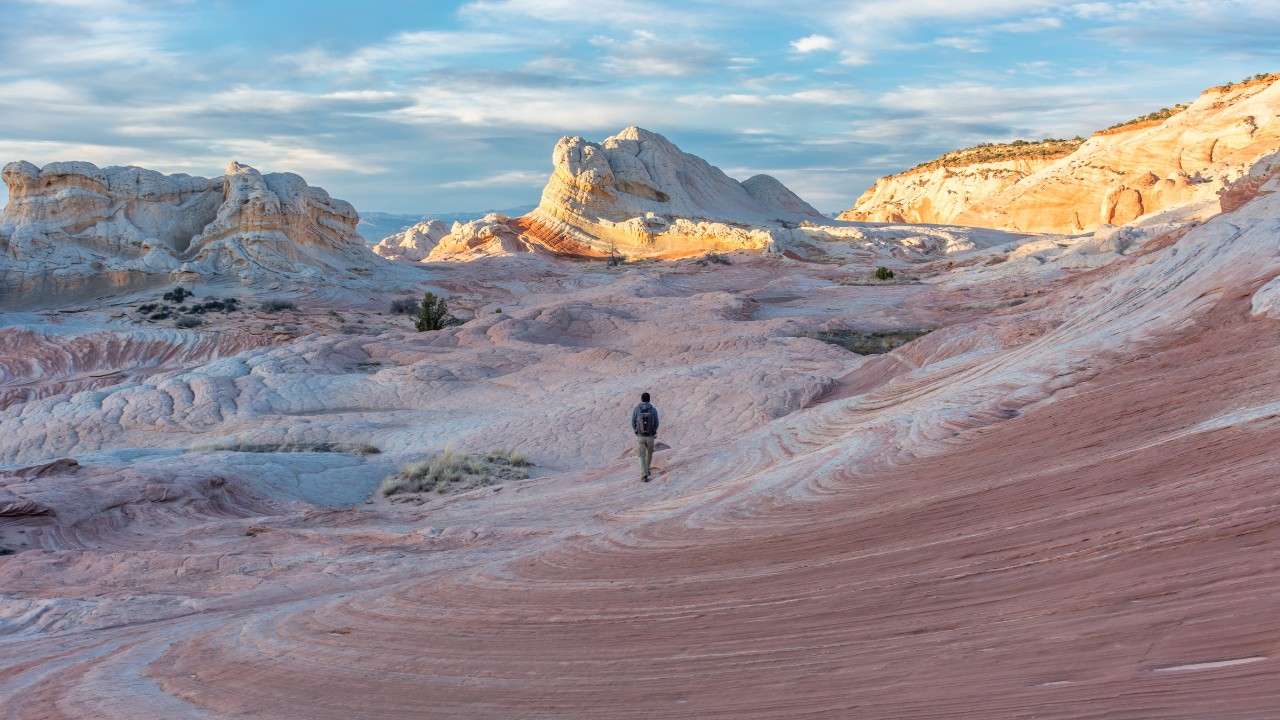
White Pocket is located in the remote Vermilion Cliffs National Monument of northern Arizona and is a surreal landscape of swirling sandstone, vibrant colors, and unique rock formations. While less famous than The Wave (which is not far from it), White Pocket offers an arguably equal if not more stunning visual experience without the need for a permit. Its remote location and challenging access make it a must-see destination for adventurous travelers looking to explore the natural beauty of the Southwest. Here’s a complete guide for first-time visitors!
Basic info:
- Name: White Pocket
- Location: Vermilion Cliffs Arizona
- Fee/permit: None
- Tours: See top options
- Hotels nearby: See hotel options (Kanab Utah)
Getting to White Pocket:
Reaching White Pocket by car is actually the most difficult part of the experience as it requires a long drive in rugged roads of the Paria Canyon inside the Vermilion Cliffs Wilderness. Expect about a 20+ mile drive in these conditions after you exit road 89 if you’re coming in from the north (or 89A if you’re coming in from the south). But once you reach it, it’s easy to hike to it afterwards. But before you do, here’s details on the drive:
- Directions: From Kanab, head east on US-89 for about 38 miles to House Rock Valley Road (BLM Road 1065). From there, the drive involves navigating a series of unpaved, sandy roads. The final 10 miles to White Pocket are particularly challenging, requiring a high-clearance, 4WD vehicle. The route is often sandy and can become impassable after rain. If you’re not experienced with off-road driving, consider hiring a guided tour from Kanab or Page. These tours provide transportation, knowledgeable guides, and safety gear. Here’s a full map of how to get there (you can get the same kind of map via Alltrails:
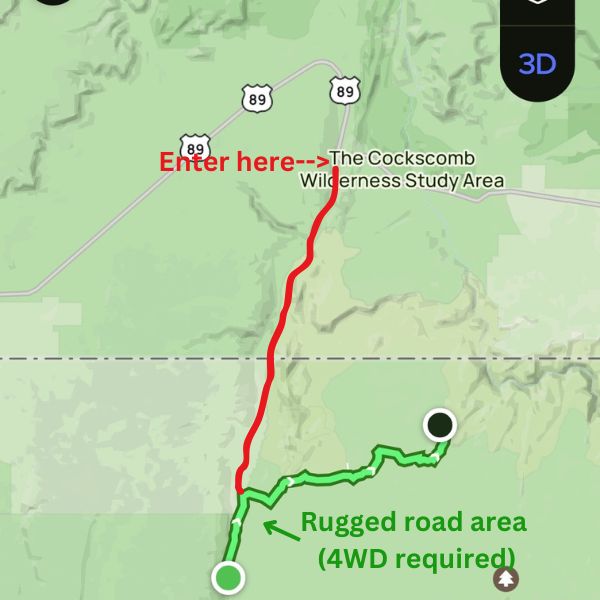
Recommendations: Besides this map, you can head over to Alltrails and get an offline copy of the road map to get to White Pocket, then follow that when you’re in the area. This will be one of the best ways to navigate there. If you do not have a 4WD vehicle, you can rent one in Page Arizona or Kanab Utah. There are also tours where you’ll be taken there (see options).
Photos:
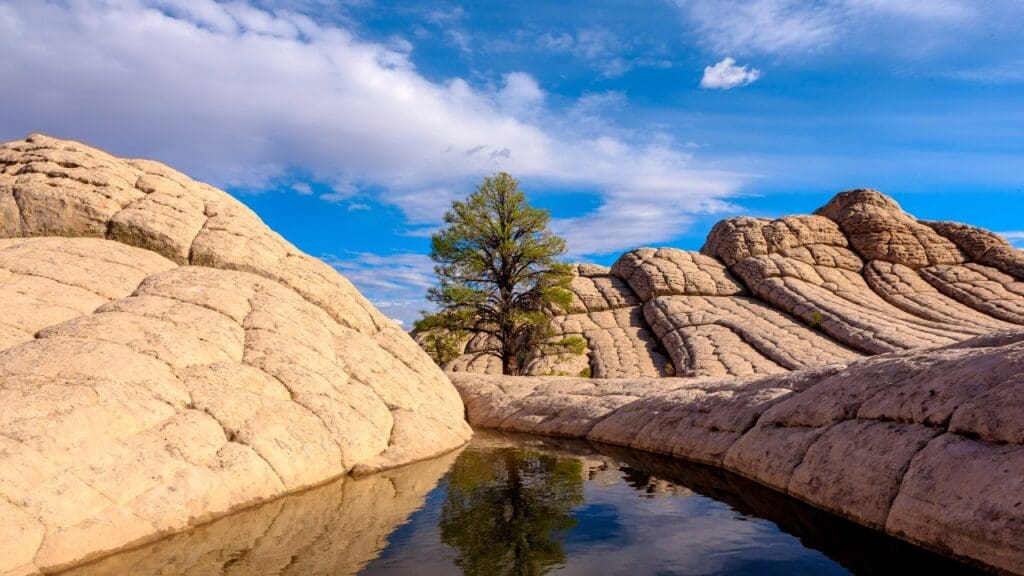
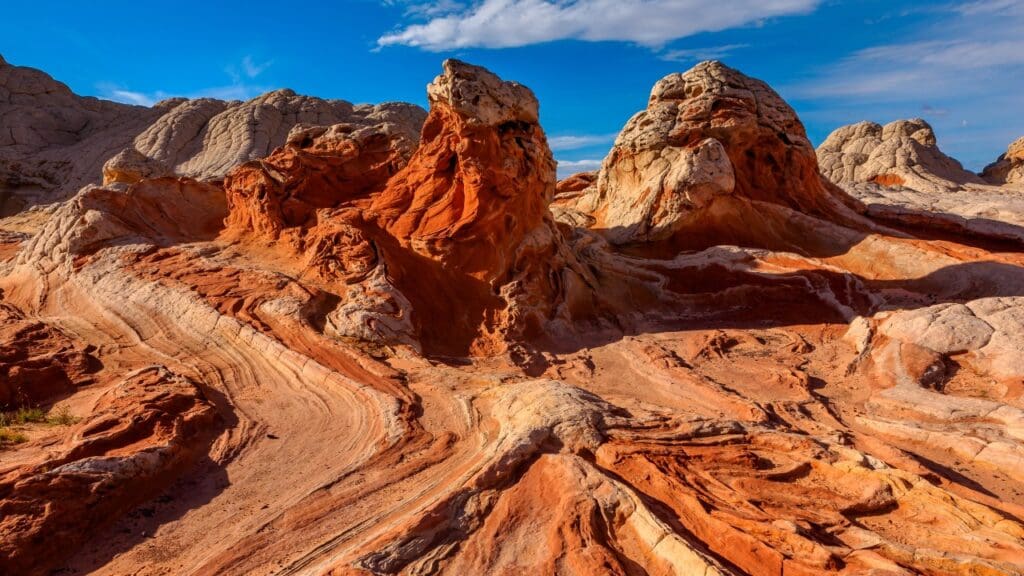
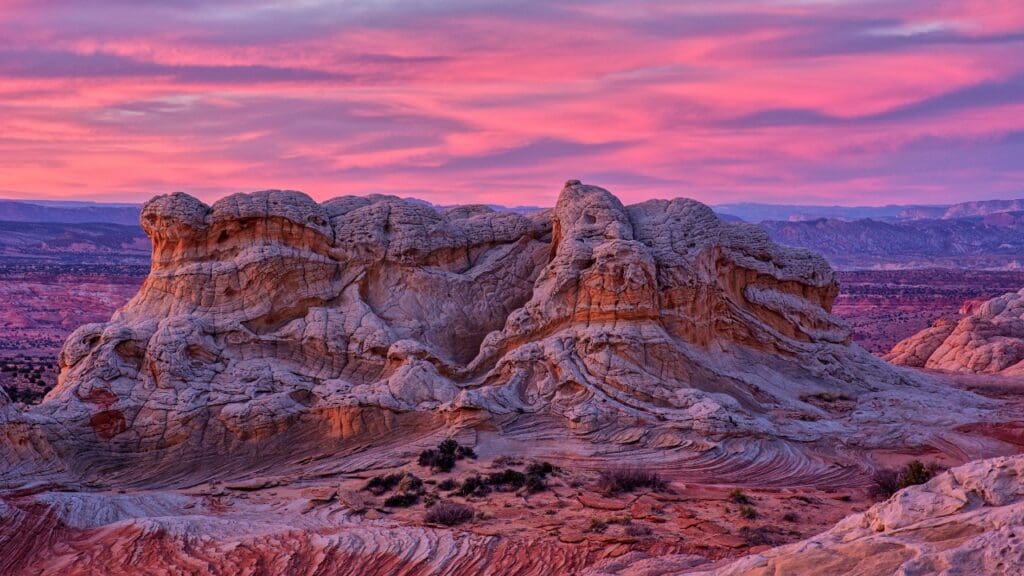
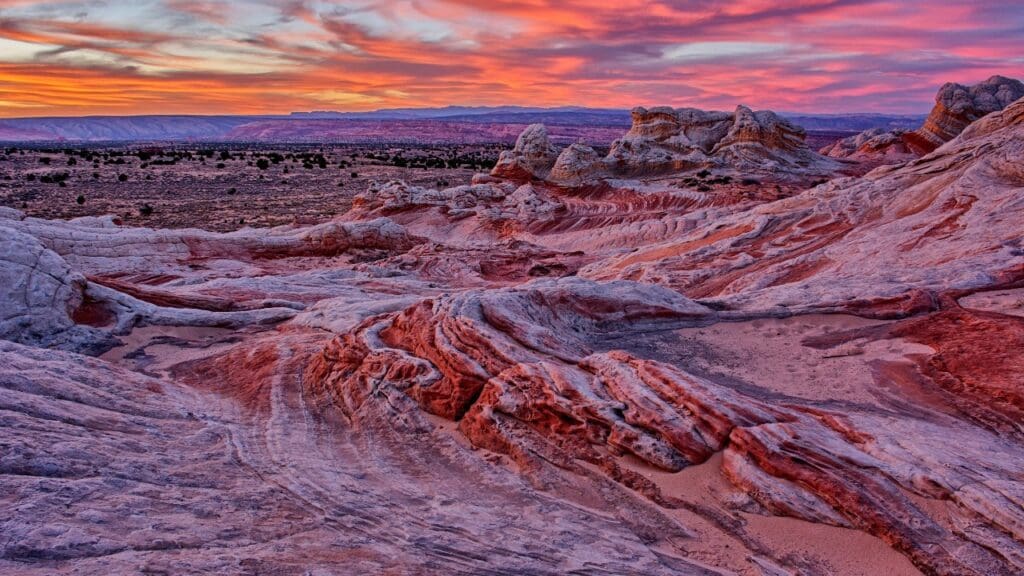
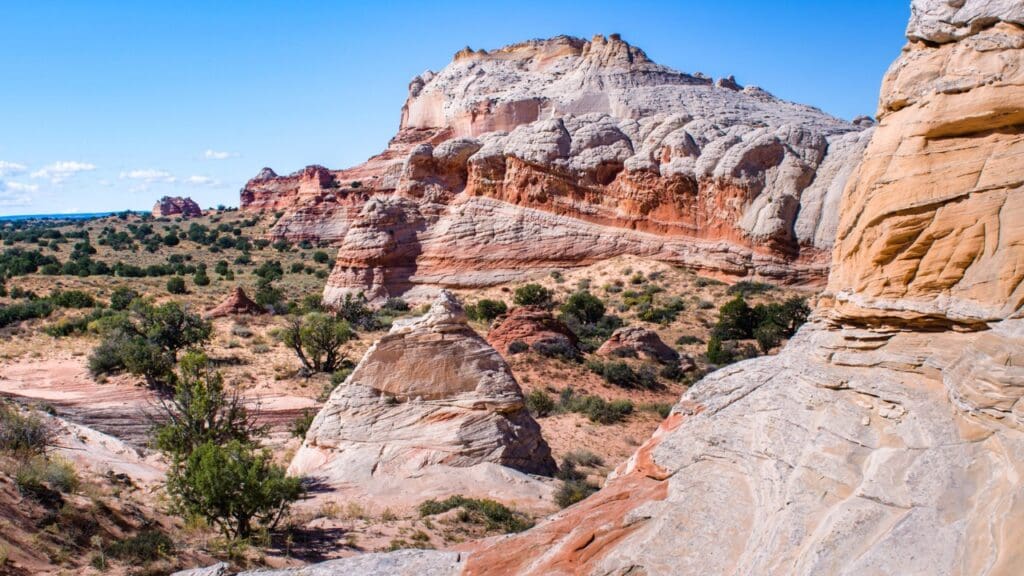
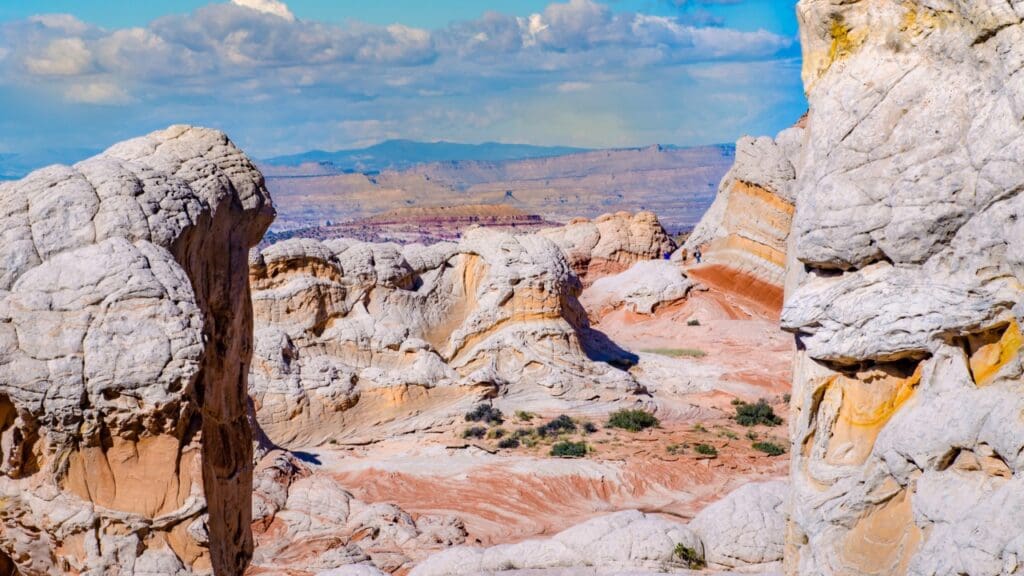
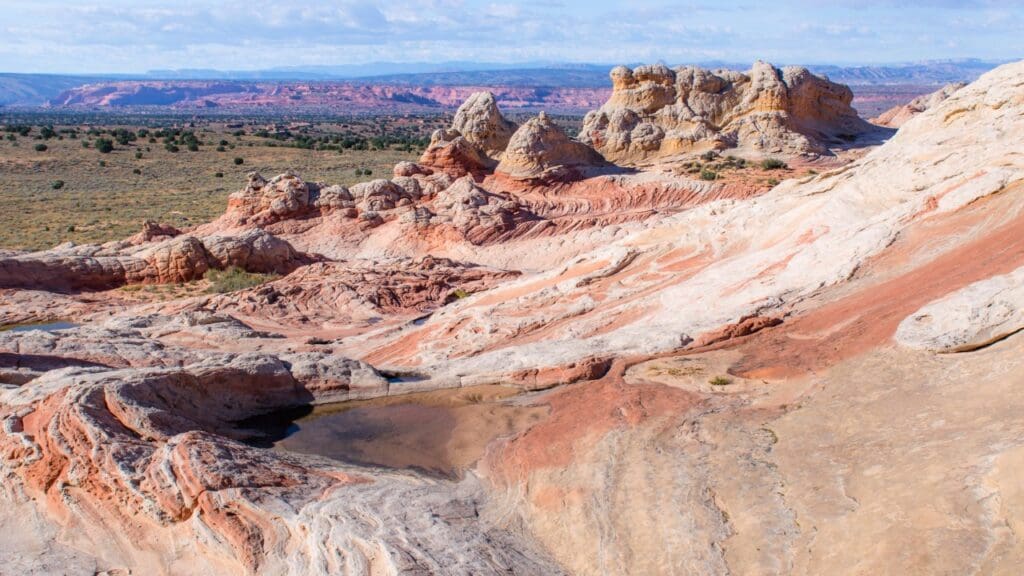
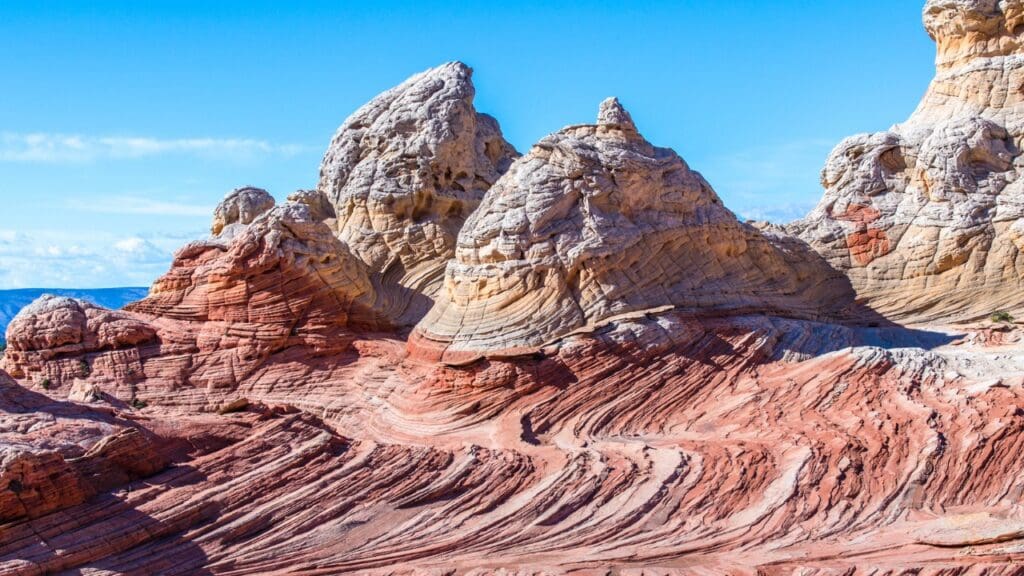
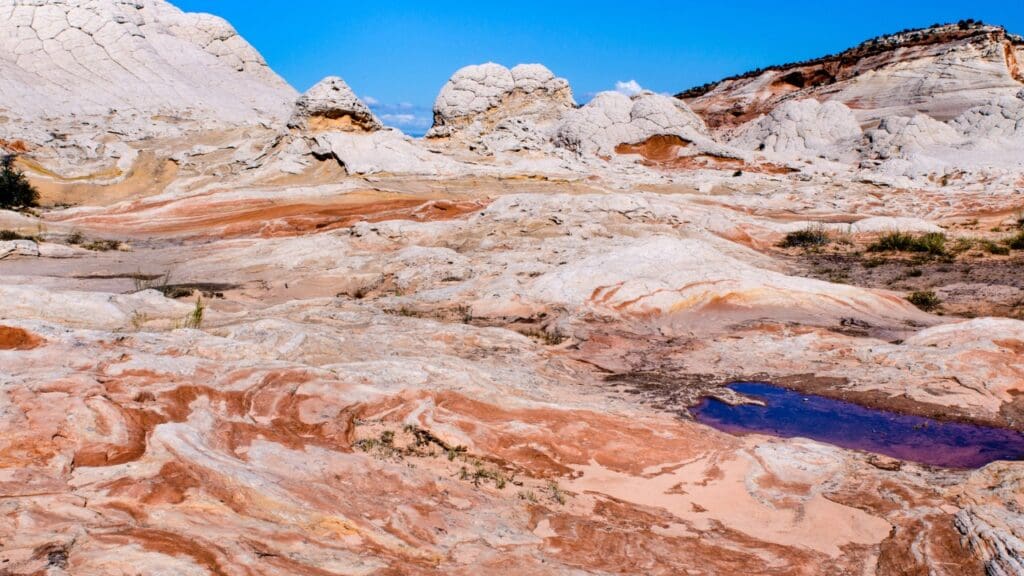
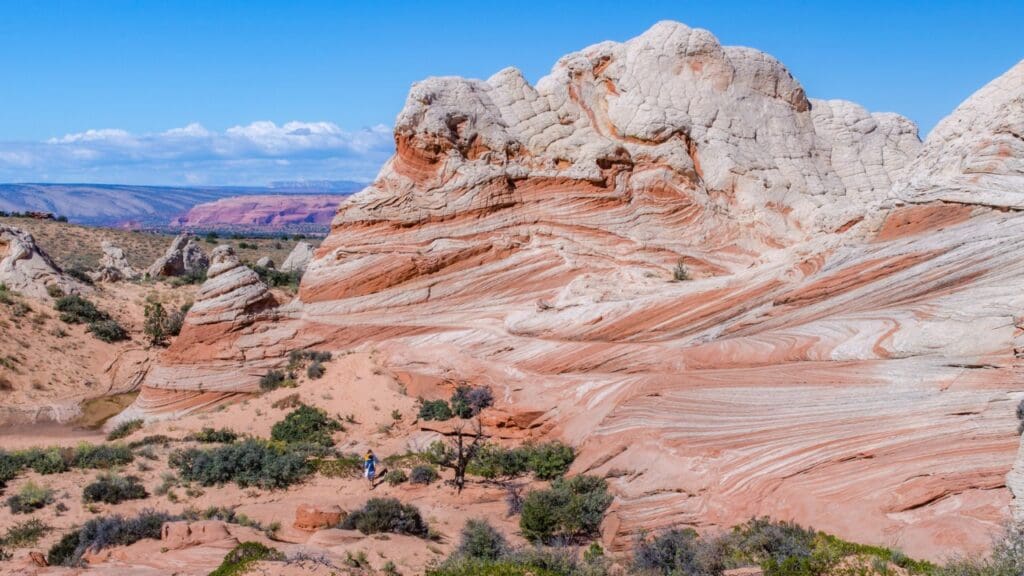
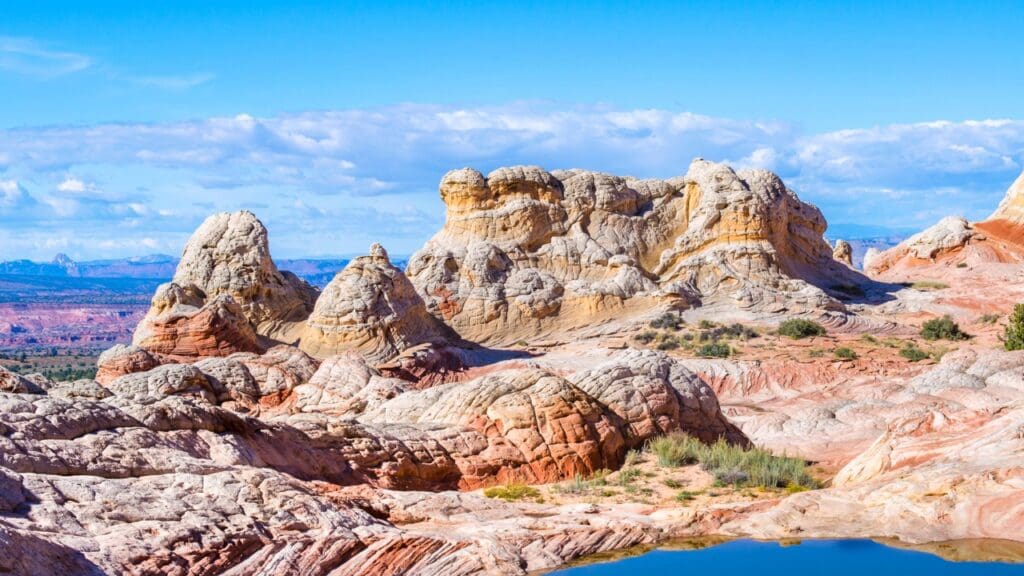
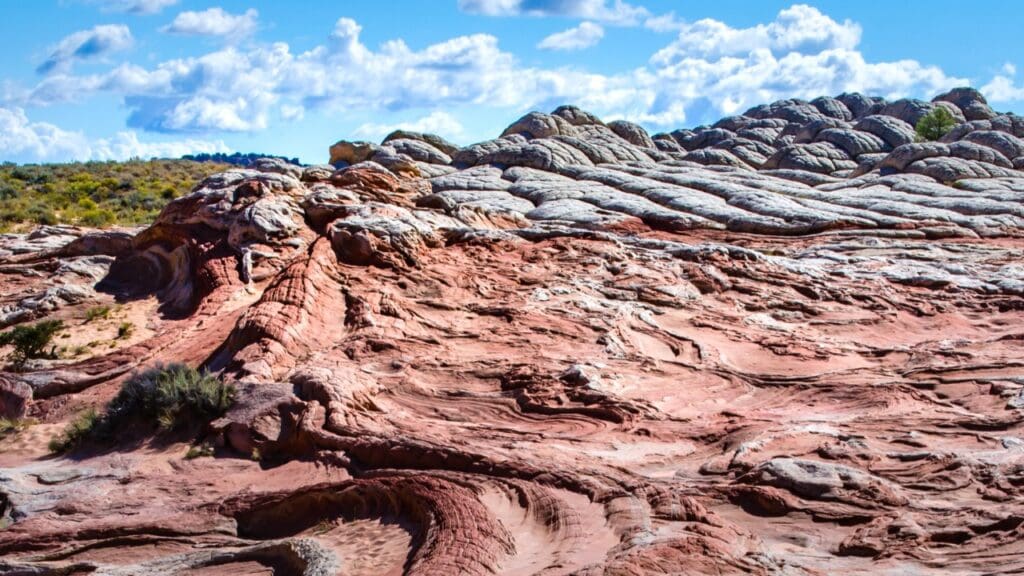
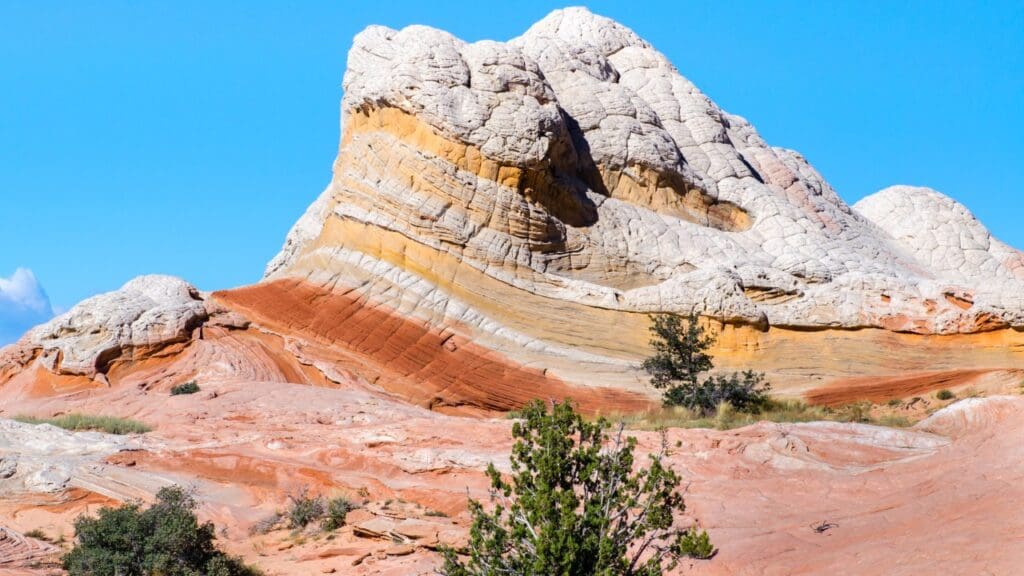
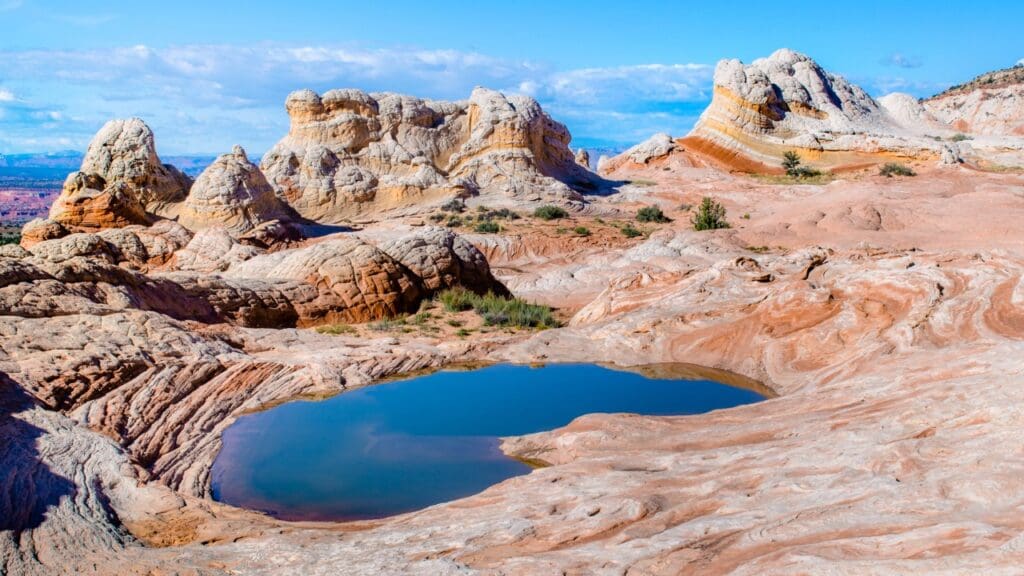
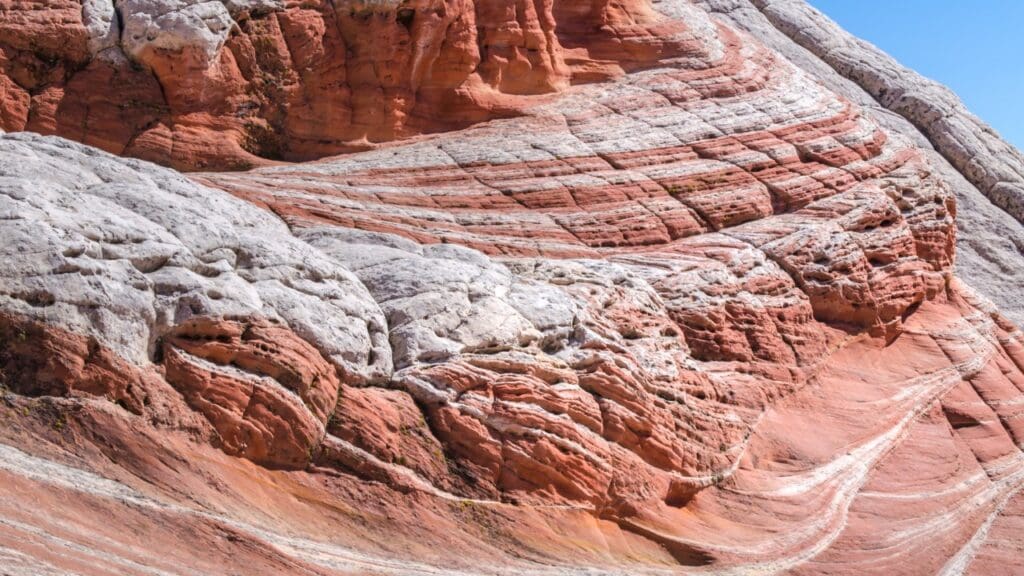

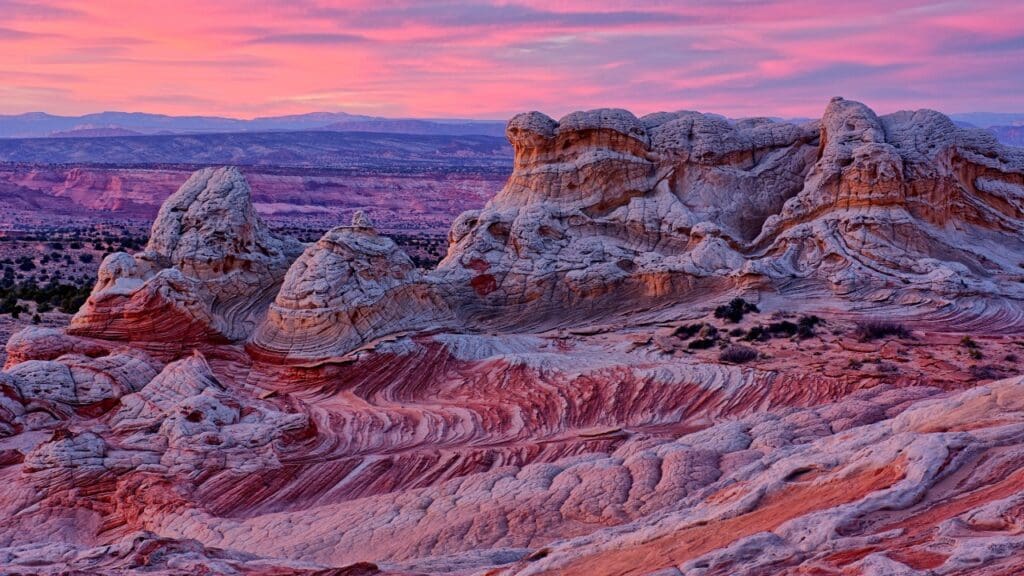
Best Times to Visit:
My personal advice is to go there between November and March as it’s less crowded and the weather is way easier to do deal with. The only issue to really consider during that time is bad weather, rain or even snow, but it’s rare even in these areas. Here’s a breakdown of each season and what to expect:
- Spring (March to May): Spring offers mild temperatures ranging from 60°F to 75°F (15°C to 24°C), making it an ideal time to explore without the intense summer heat.
- Fall (September to November): Fall is another excellent time to visit, with similar temperatures and clear skies. It’s also a great season for photography, as the soft light enhances the sandstone’s colors.
- Summer (June to August): Summer temperatures can exceed 100°F (38°C), making it less comfortable for hiking and exploring. If visiting during summer, plan to arrive early in the morning or late in the afternoon to avoid the heat.
- Winter (December to February): Winter can bring cooler temperatures (40°F to 55°F) and occasional snowfall, adding a unique contrast to the red and white sandstone formations. Dress in layers, as temperatures can drop sharply after sunset.
What to Expect:
White Pocket’s dramatic rock formations make it one of the most photogenic spots in the Southwest. Here’s what you can expect:
- Swirling Sandstone Formations: The area is characterized by a maze of colorful sandstone formations that swirl in patterns of red, white, orange, and yellow. These formations have been shaped over millions of years by wind and water erosion. The best light for photography is during sunrise and sunset, when the rocks take on a warm glow. Bring a tripod and a wide-angle lens to capture the expansive scenery.
- Unique Rock Features: You’ll encounter strange rock features like “brain rocks,” which have a textured appearance resembling brain coral, and “dinosaur tracks,” which are rounded depressions in the sandstone that look like ancient footprints.
- Wide Open Spaces: White Pocket’s landscape is vast and open, offering 360-degree views of the surrounding wilderness. You can roam freely across the formations, but be cautious of uneven surfaces and potential drop-offs.
Hiking gear recommendations:
- Best rated hiking shoes for day hikes (men/women sizes available)
- Best rated hiking backpack for day hikes
- Best rated hiking pole for day hikes
Things to Do:
- Hiking and Exploring: White Pocket does not have designated trails, but the area is relatively small, making it easy to explore on foot. The terrain is uneven, so wear sturdy hiking boots with good traction. Plan to spend at least 2-3 hours exploring the area, as you’ll want time to walk across the formations, take photos, and simply enjoy the surreal scenery. The sandstone can be slick, especially after rain. Be cautious when walking on sloped or uneven surfaces.
- Photography: White Pocket is a photographer’s paradise, with endless opportunities to capture abstract patterns, vibrant colors, and dramatic rock formations. Look for unique formations like the “brain rocks,” “wave-like ridges,” and “caverns” formed by erosion. The area is particularly stunning during the golden hours of sunrise and sunset.
- Night Photography: White Pocket’s remote location also makes it a fantastic spot for night photography, including the Milky Way, star trails, and astrophotography. Bring a headlamp, tripod, and wide-angle lens for the best results.
- Wildlife Viewing: While wildlife sightings are limited, you might spot lizards, jackrabbits, and various bird species, including hawks and eagles soaring overhead. Keep an eye out for desert flora, such as prickly pear cactus and yucca plants, which add to the desert’s beauty.
Where to Stay:
- Camping at White Pocket: Primitive camping is allowed near the parking area. There are no amenities, so come prepared with all your supplies, including water, food, and camping gear.
- Hotels in Kanab or Page: Both Kanab and Page offer a variety of accommodations, from budget motels to cozy inns. See Kanab hotels. You can also click here for Page hotels.
Essential Tips:
- Bring Plenty of Water: White Pocket is in the desert and there is no water available there. Bring plenty of bottles of water (per person).
- Check Road Conditions: The roads leading to White Pocket can be challenging, especially after rain, when they can become muddy and impassable. Check road conditions with the Bureau of Land Management (BLM) or local guides before heading out.
- Use Offline Maps: Remember, cell service is limited or nonexistent in this remote area, so download offline maps and GPS coordinates before you go (Alltrails is good).
- Be Prepared for Off-Road Driving: The sandy roads require a high-clearance, 4WD vehicle. If you’re not comfortable with off-road driving, consider joining a guided tour, as the terrain can be tricky.
Nearby Attractions:
- The Wave (Coyote Buttes North): If you’re lucky enough to secure a permit, The Wave is one of the most famous rock formations in the world, located just a few miles from White Pocket. Permits are highly competitive, so plan well in advance.
- Wire Pass: This wilderness area offers additional hiking, photography, and exploration opportunities, including Buckskin Gulch, one of the longest slot canyons in the world. But Wire Pass trail is about a 3 mile hike into a beautiful slot canyon that is beginner friendly (permit required beforehand).
- Marble Canyon: Located about an hour from White Pocket, Marble Canyon offers stunning red rock views, hiking trails, and opportunities to explore the Colorado River. It also has amazing trails like the Spencer trail and the Cathedral Wash, both amazing options worth exploring (A car fee is required to enter the area).
Last Things to Know:
White Pocket’s otherworldly landscape offers a once-in-a-lifetime experience for those willing to venture off the beaten path. From its swirling sandstone formations to its vibrant colors, this hidden gem in the Vermilion Cliffs National Monument is a must-visit for adventurers, photographers, and nature lovers. By following this guide, you’ll be well-prepared for an unforgettable visit to one of the Southwest’s most surreal destinations.
Related:
